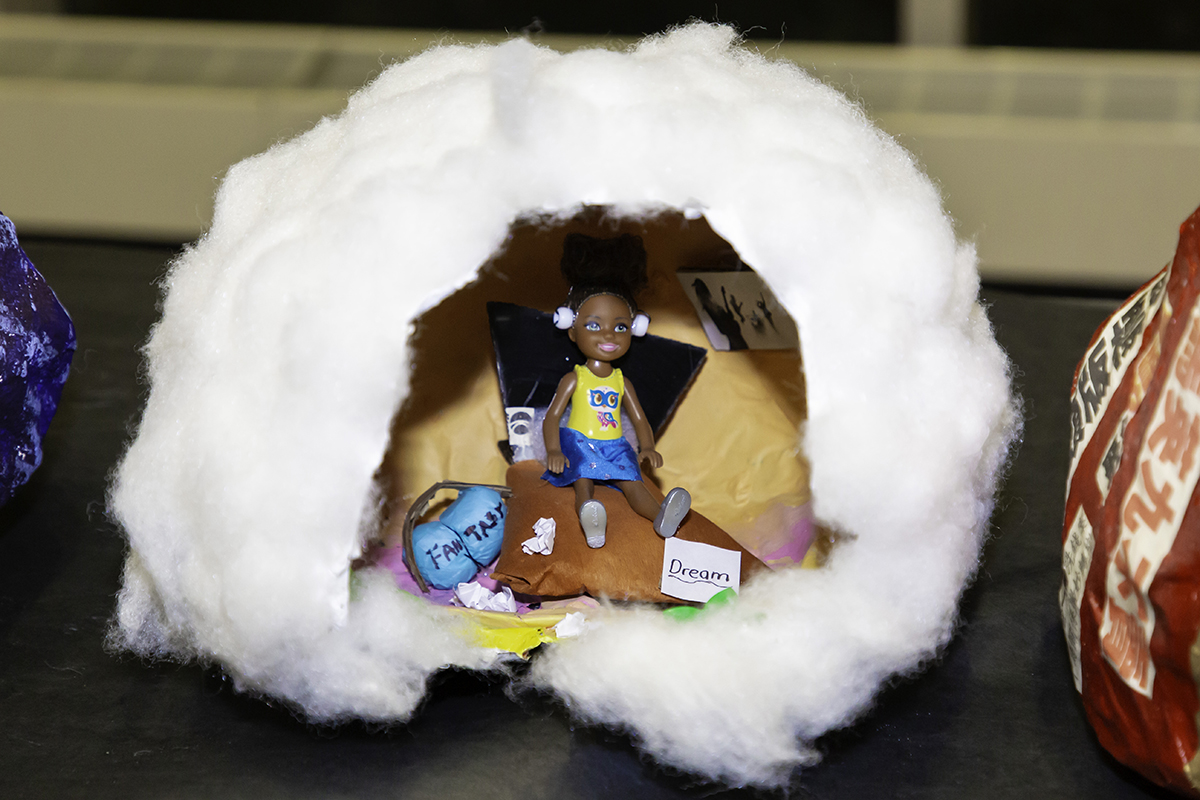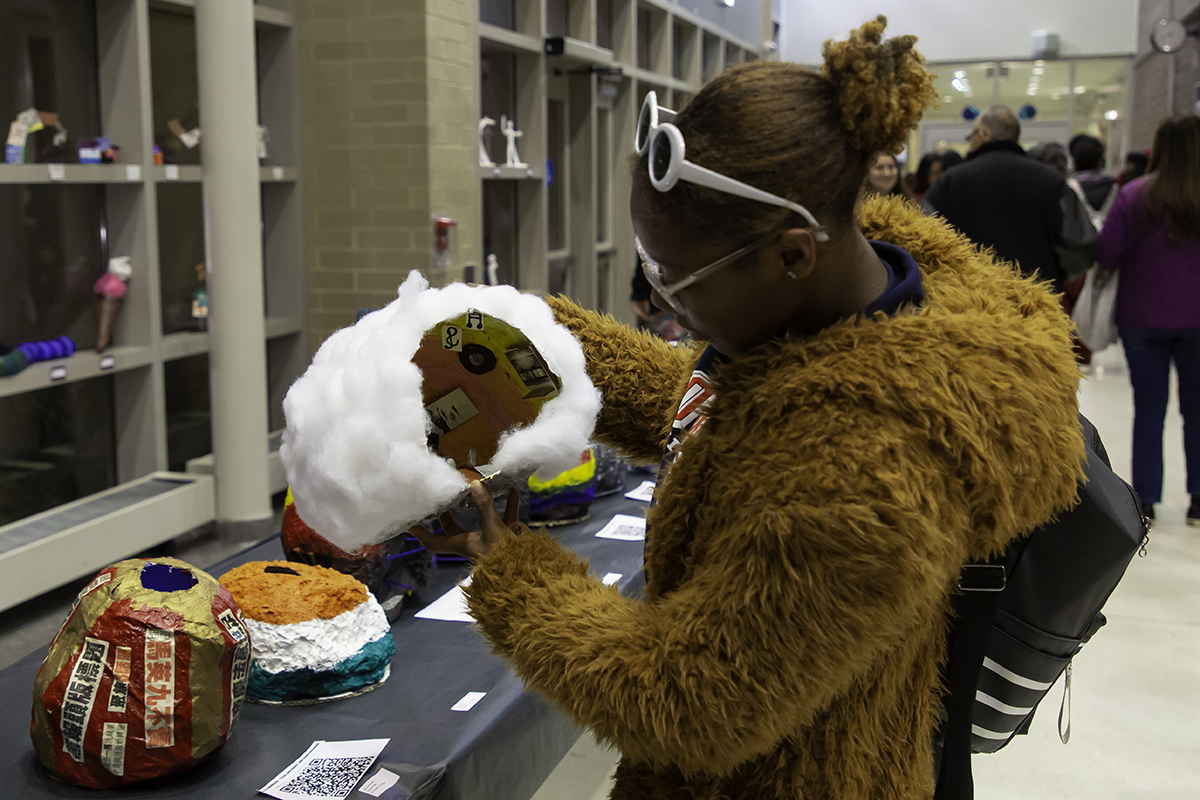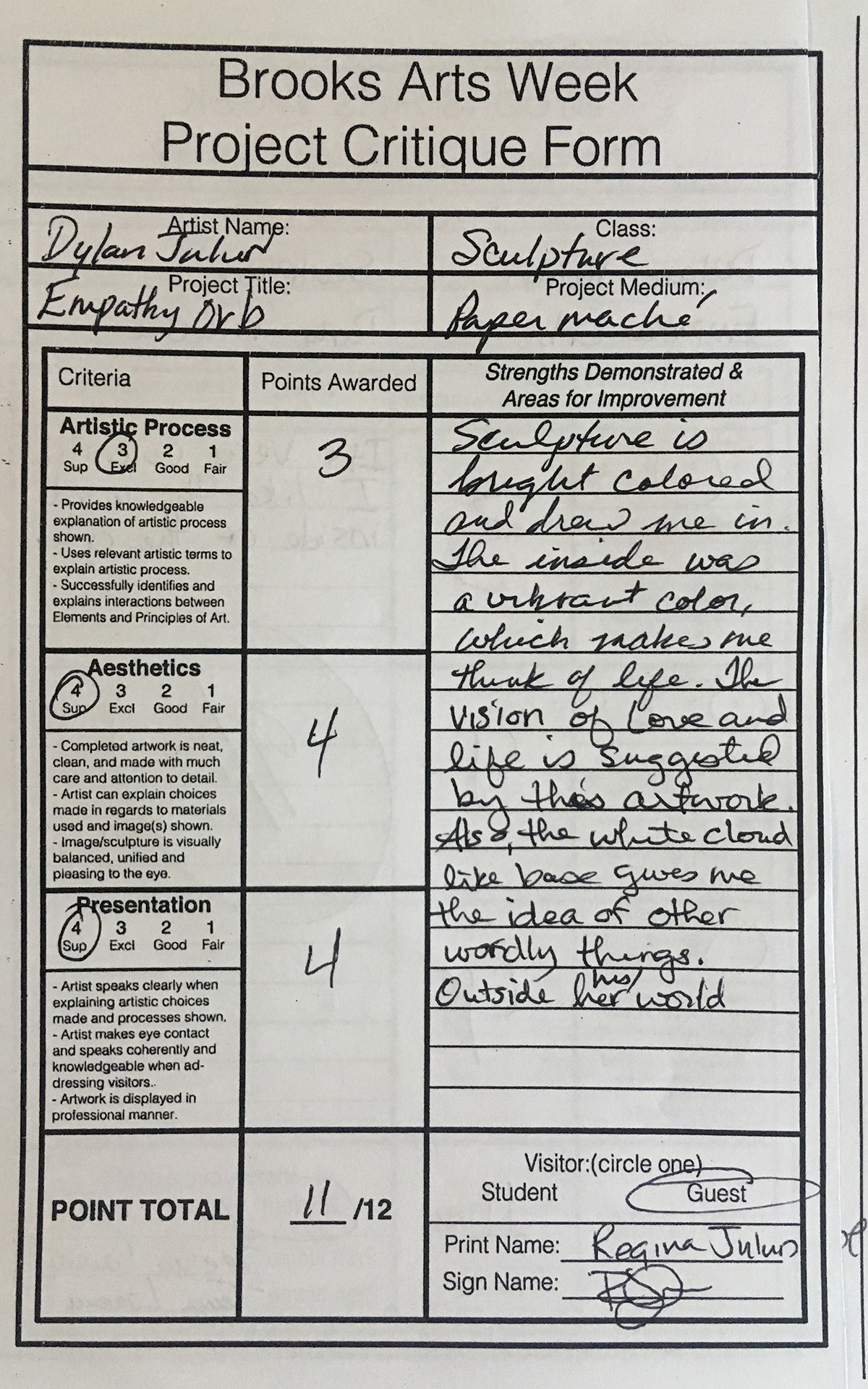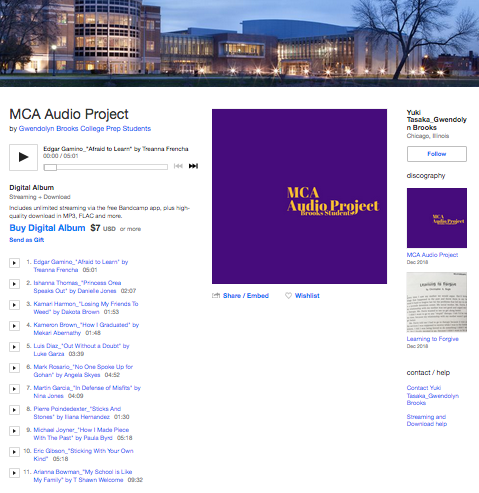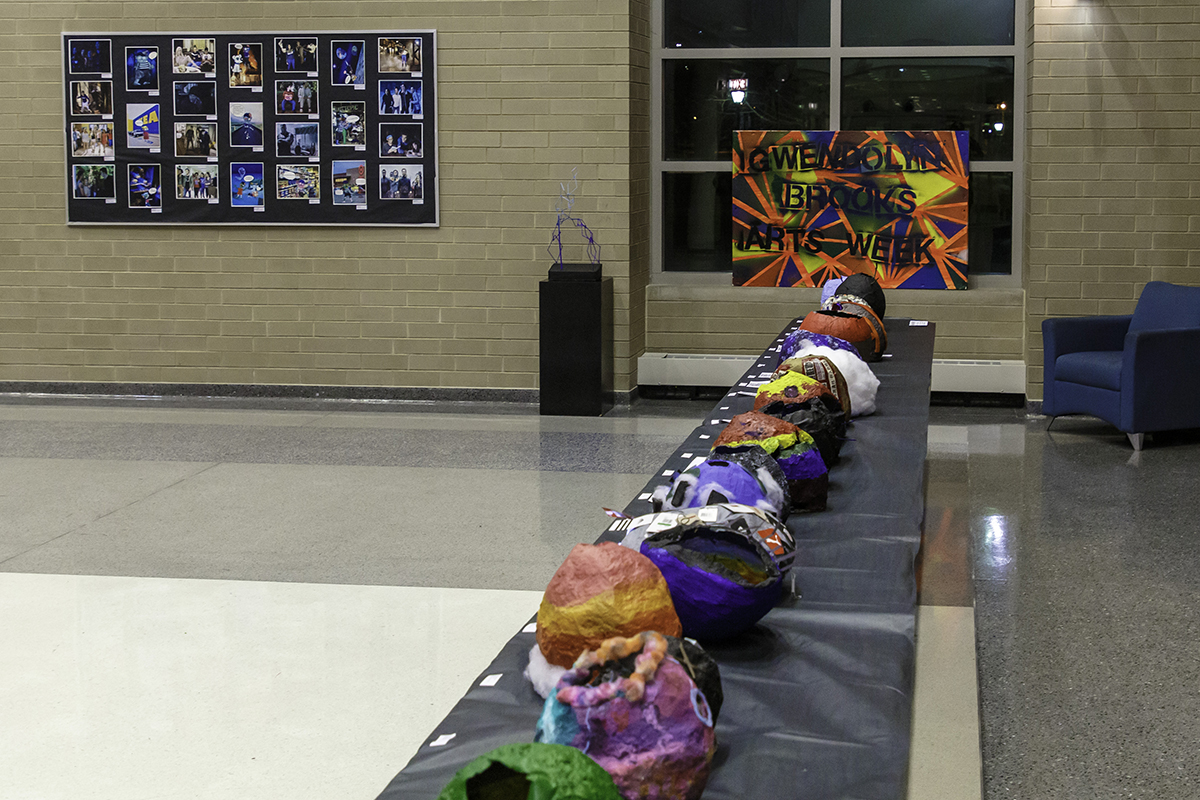Empathy Multimedia Project
Finding Connections Where We Least Expect It
By Jack Famera + Jake Mitchell
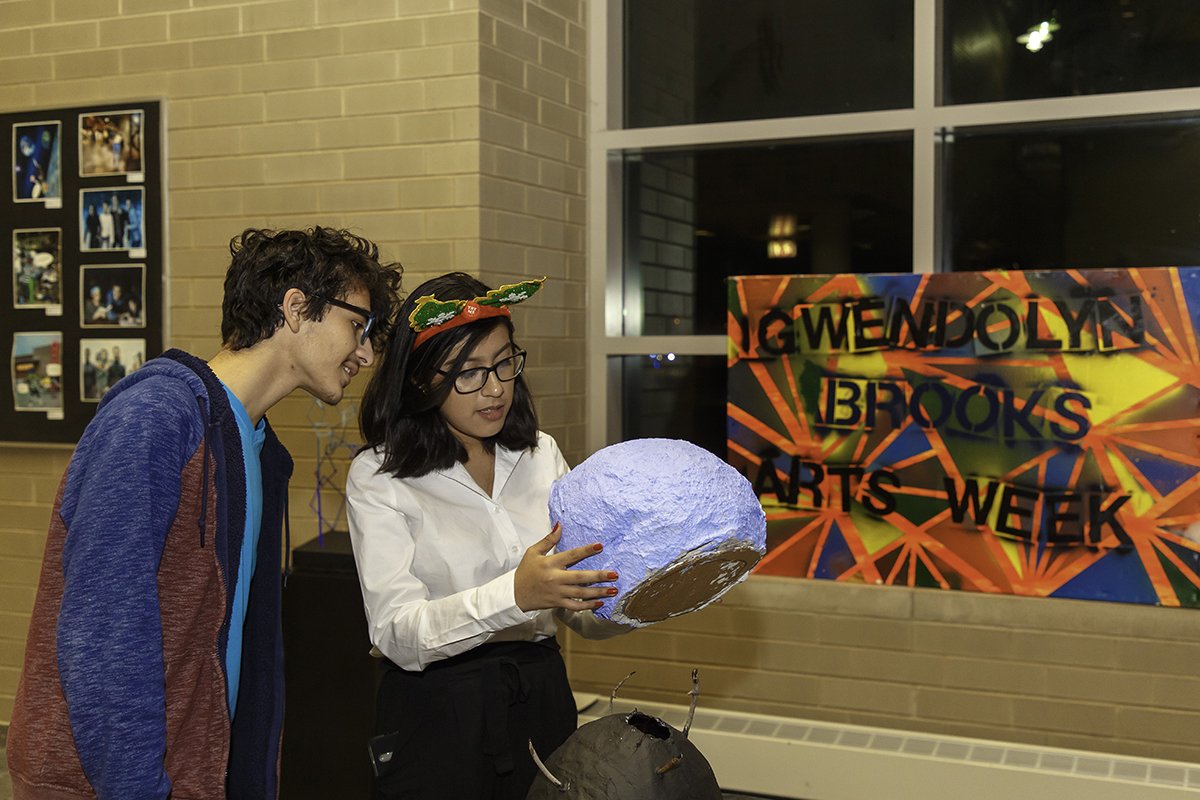
During the first semester of the 2018–19 school year, students enrolled in Mr. Famera’s AP 3D course and Mr. Mitchell’s Video course at Gwendolyn Brooks College Prep took part in a contemporary group project in which their goal was to create a work of art that would evoke empathy from the viewer. Students in each of the self-contained classes consisted of mainly Juniors and Seniors who had taken previous High School art courses. During the annual Brooks Winter Arts Showcase, the students’ artworks were unveiled for close to one thousand visitors, including parents, staff, and community members, who activated the interactive audio/visual art experience.
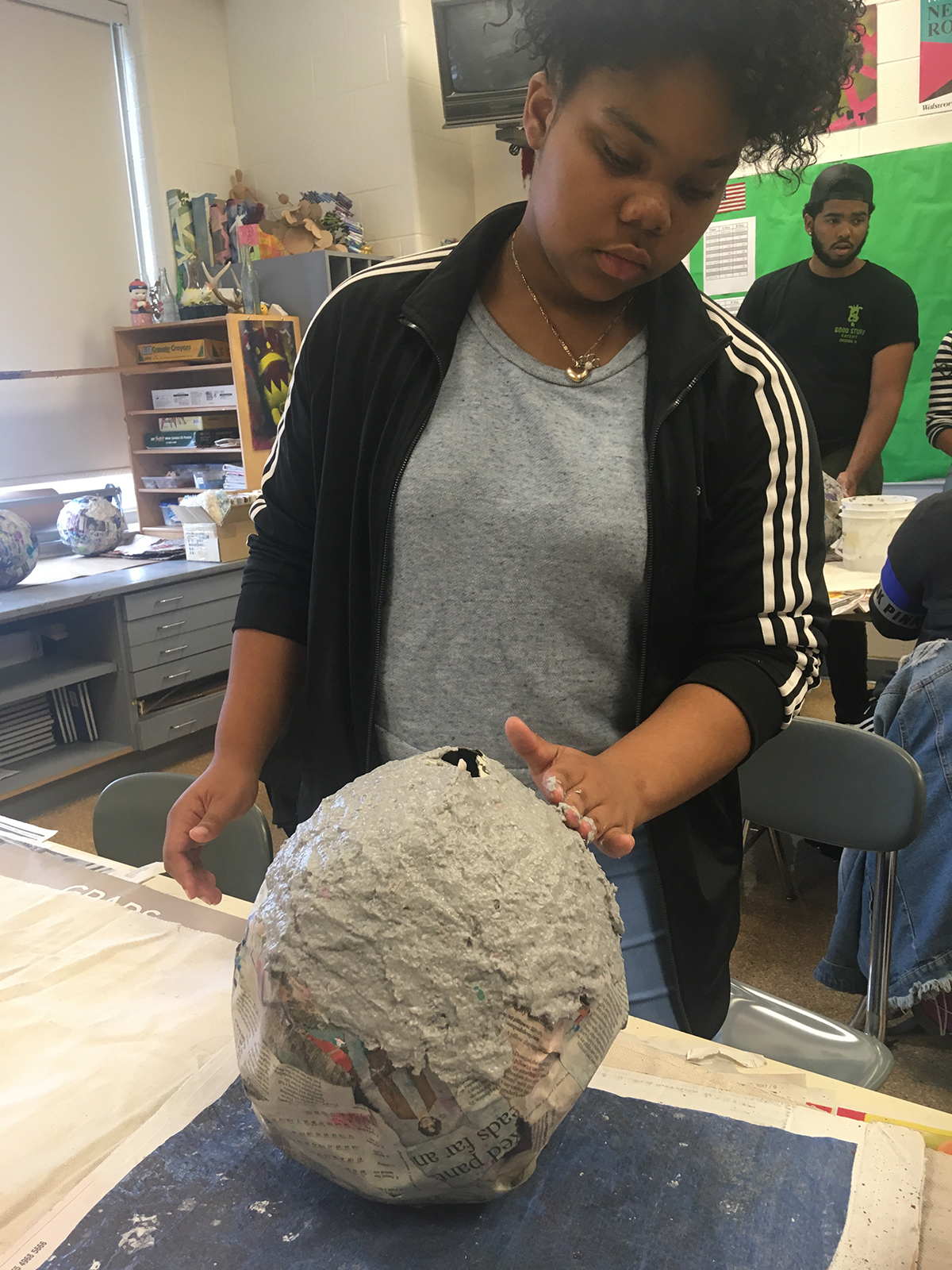
The guiding idea of this project was to evoke empathy via an immersive art experience in which viewers activate a personal story using their senses of touch, sight, and sound. Our main objectives included: Students will connect stories by teen authors to their own life stories; students will consider the relationship between the concept of empathy and the authors’/personal stories; and students will interpret these stories via their particular art disciplines to evoke empathy from the viewers/listeners who interact with their completed work with the goal of answering our key guiding question: Can a work of art evoke empathy?

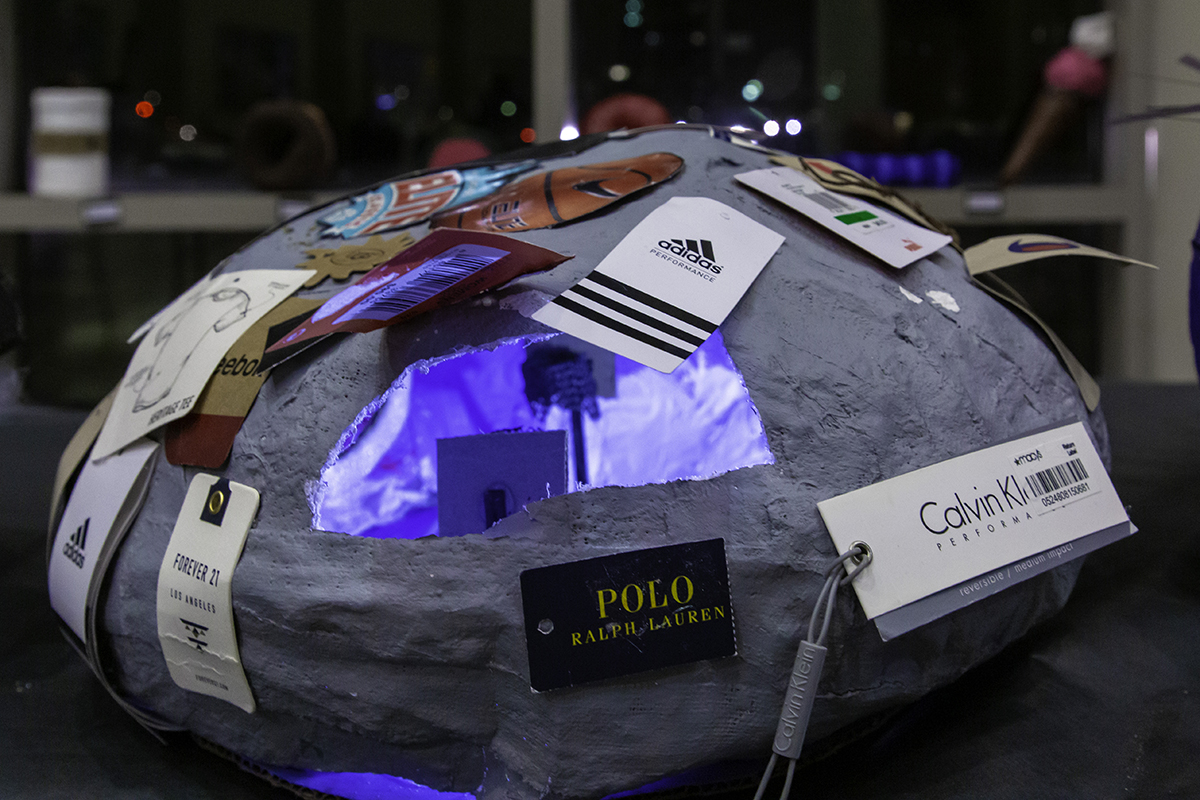
Project Overview
The project creation lasted over 4 months in the classroom, during which time classes met twice a week in the block scheduling format (104 minutes per meeting). However, not all class sessions were devoted to the implementation of the project.The project began with the creation of identity sketchbooks that participating students utilized throughout the project. The sketchbook covers were created the first day of school as an artmaking activity that culminated in an anonymous book swap in which students developed a persona of who created the cover collage, essentially judging the book by its cover. This began a discussion about how we make assumptions about others.
Evoking empathy became the cornerstone theme of the project, after reflecting on the large increase of behavioral issues in the previous school year. We wanted to address school culture issues and their negative impact on learning, including student disengagement, mismanagement of studio time, excessive cell phone use, and disrespect of instructors, staff, and peers. After much discussion we wondered if students’ increased awareness of their actions’ effects on others and consideration of how to put their own feelings aside in order to walk in the shoes of another would help these behavioral issues begin to decline. Our collective desire for students to think about the choices they make before exhibiting negative behavior led us to ponder how artmaking could help evoke a sense of empathy in our school community.
Students read and viewed David Foster Wallace’s This is Water commencement speech, which focuses on empathy. In response, students wrote and shared essays about what kind of person they would like to be in the future. We held a discussion about the importance of empathy and the negative effects not exhibiting empathy could have on a community. We guided students in connecting their reflections to their description of their potential future self and helped solidify the topic of empathy as important and worthy of more exploration. As we furthered our investigation of this topic, students took part in the exploration of character profiles using imagery and imagining themselves in the shoes of strangers. These activities were meant for the students to become more mindful about the feelings and experiences of others before reacting to situations or making judgments on someone's character.
We searched for additional life stories of real and fictional characters as source material to create sculptural objects and soundscapes that conveyed the stories. We explored the creation of various made up characters and stories by each student, using personas of family members or historical figures, and Story Corp interviews recorded by NPR. In the end, we pulled stories published by teen authors from the book The Struggle to be Strong, which consisted of relatable real-life situations and problems.
As we began to create our objects and soundscapes in response to the stories, students were paired with each other anonymously across the two classes to keep both parts of the projects separate until their debut at the annual Brooks Winter Gallery and Performance Showcase. The hope was that the interpretations from the same source material would prove somewhat similar without prior knowledge of each other’s involvement. The AP 3D student created physical representations of empathy using papier-mâché plastered-over balloons. The orbs which became known as the “Empathy Orbs,” were filled with a variety of found objects, images, colors and textures, taken from and inspired by the stories students used. Video Production students used found and recorded sounds to produce audio landscapes using Garageband and Audacity that embodied the atmosphere of the same individual stories.
Each completed Empathy Orb was paired with a scannable QR code that audience participants could scan with their smartphone to hear the audio. Activation occurred when viewers looked within, picked up, felt the outer textures of the orbs while listening to the soundscape. Notably, each of the completed Empathy Orbs can be easily moved and displayed in a variety of locations providing ample opportunity for the continuation of the project. Viewers were encouraged to interact with all Empathy Orbs and provide feedback via a critique sheet after viewing and listening to the work. The critique sheets provided valuable insight to the varied success of the work. Aesthetically, an overwhelming amount of reviews were positive, as most enjoyed the quality and presentation of the work. Viewers appreciated the variety among the projects in addressing the concept of empathy through both physical objects and audio soundscapes.
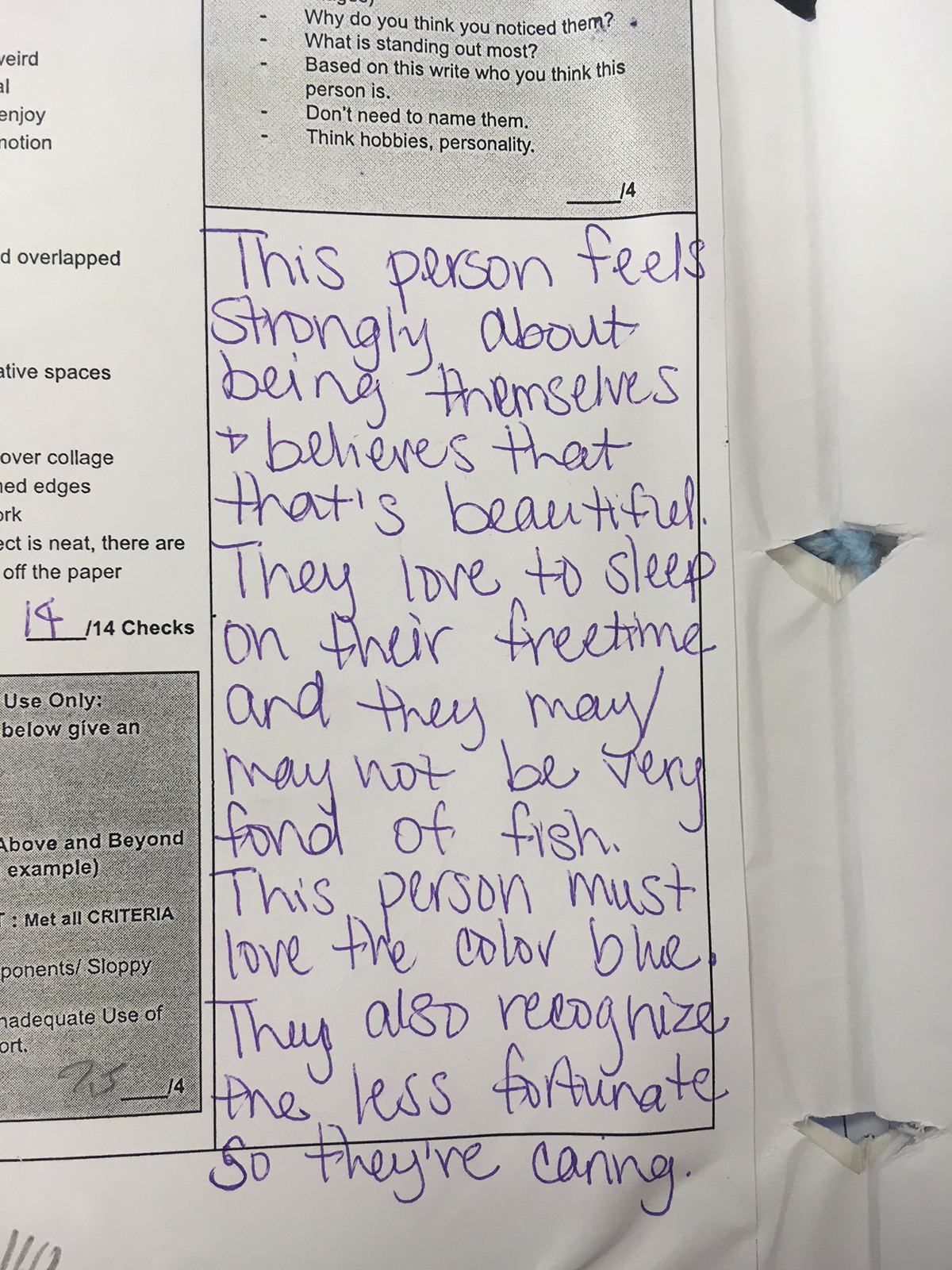
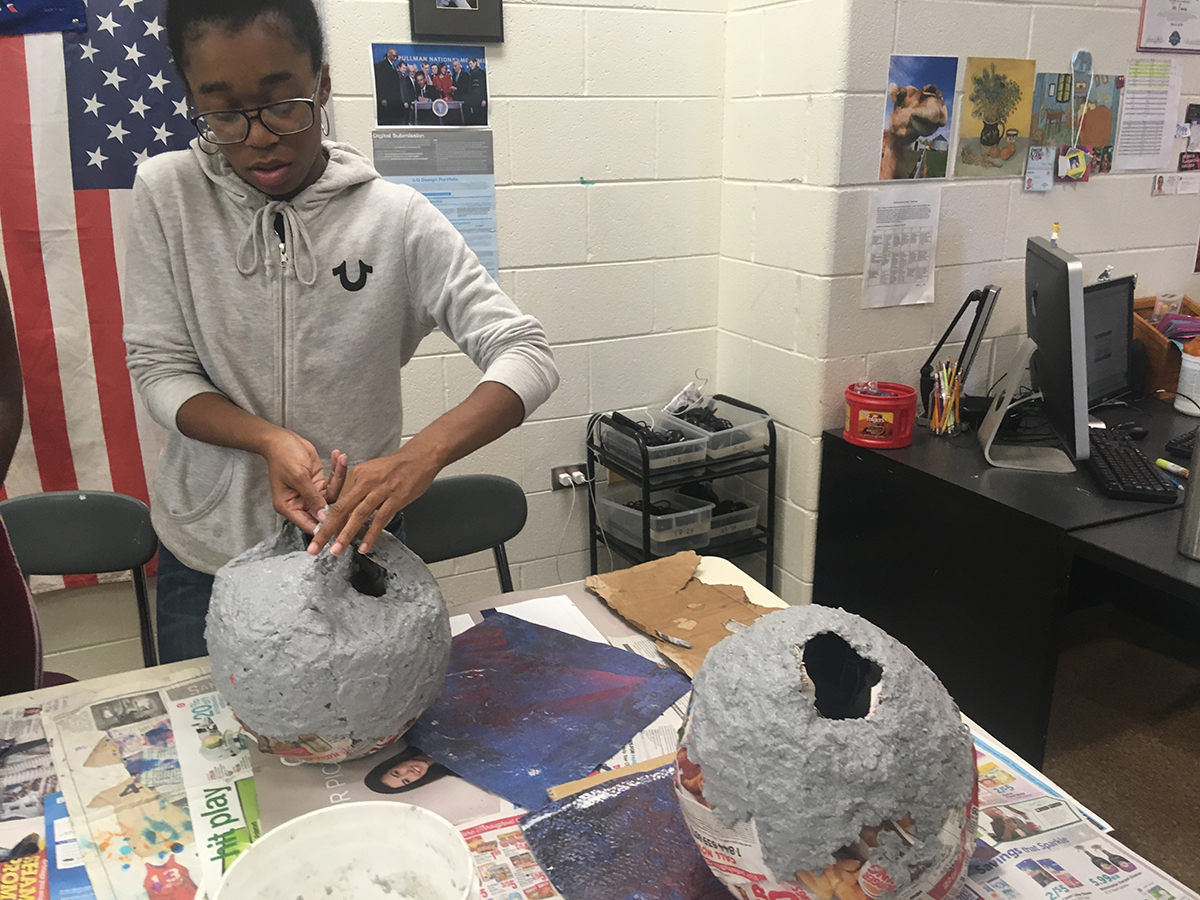

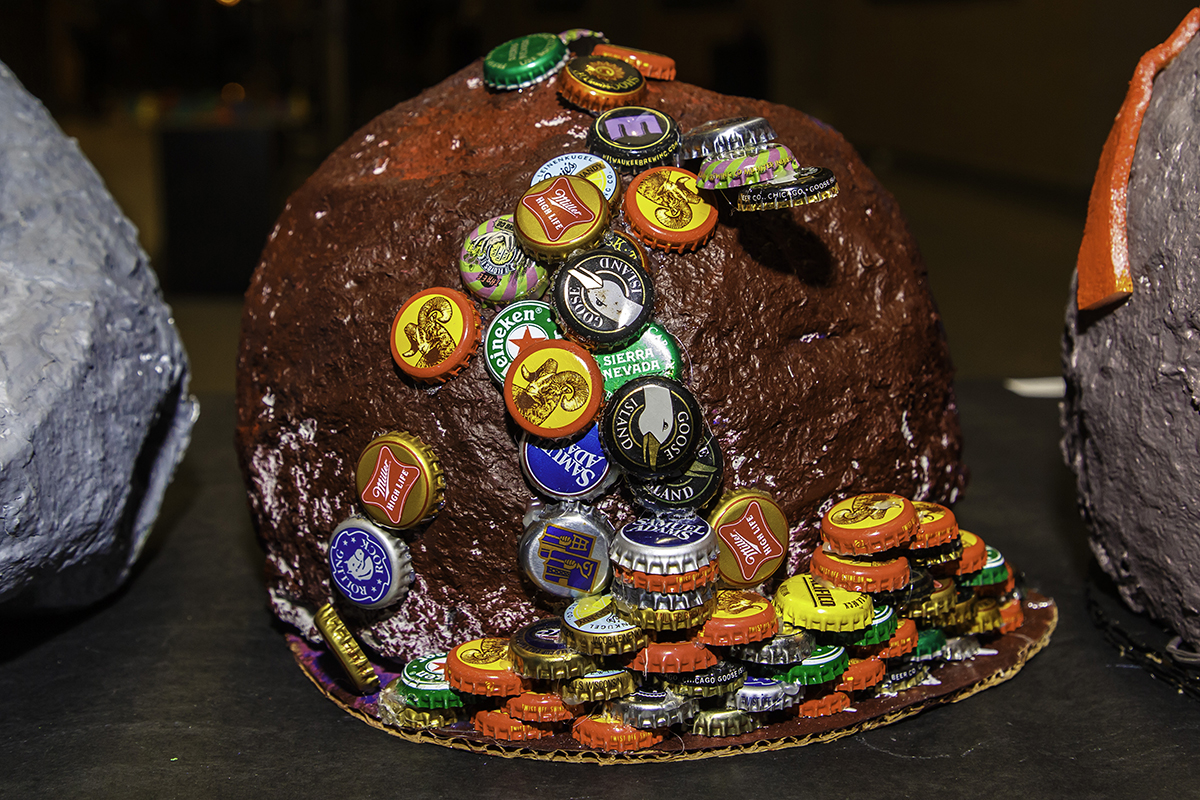
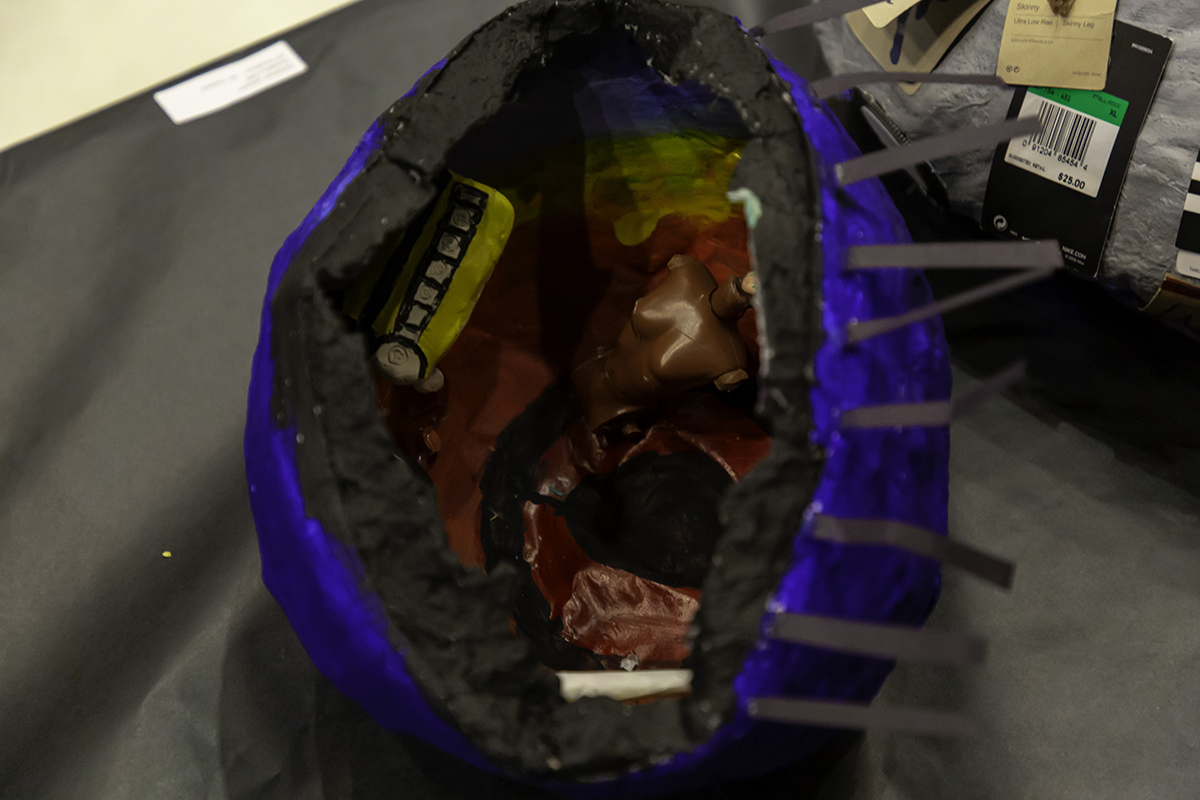
Materials + Supplies
- Orbs: Balloons, papier-mâché, plaster wrap, acrylic paint, found objects, battery powered tea lights, organic textures, acrylic paint, and hot glue.
- Audio Landscapes: Designed using recorded speech by students, found audio and sound effects. Audio mixed using Garageband and Audacity.
MCA Connections
The MCA served as an initial jumping off point for the project. Prior to our visit to the MCA, each class experienced the exhibition and participated in discussions on how artists create thought-provoking art with distinct messages through media. Students were inspired by the contemporary art in I Was Raised on the Internet and by the artist led tours. Many students in particular responded to the work of Amalia Ulman, Excellences & Perfections, and how she used social media to portray a made-up persona as commentary on issues revolving around vanity, identity, and social status. After the trip, class discussions became centered more on the artist’s particular message rather than the aesthetic quality of the work. Students were pushed to focus more on their message/story/theme instead of on the visual quality of their piece, which was helpful in considering how they might focus more specifically on conveying a message in their work.
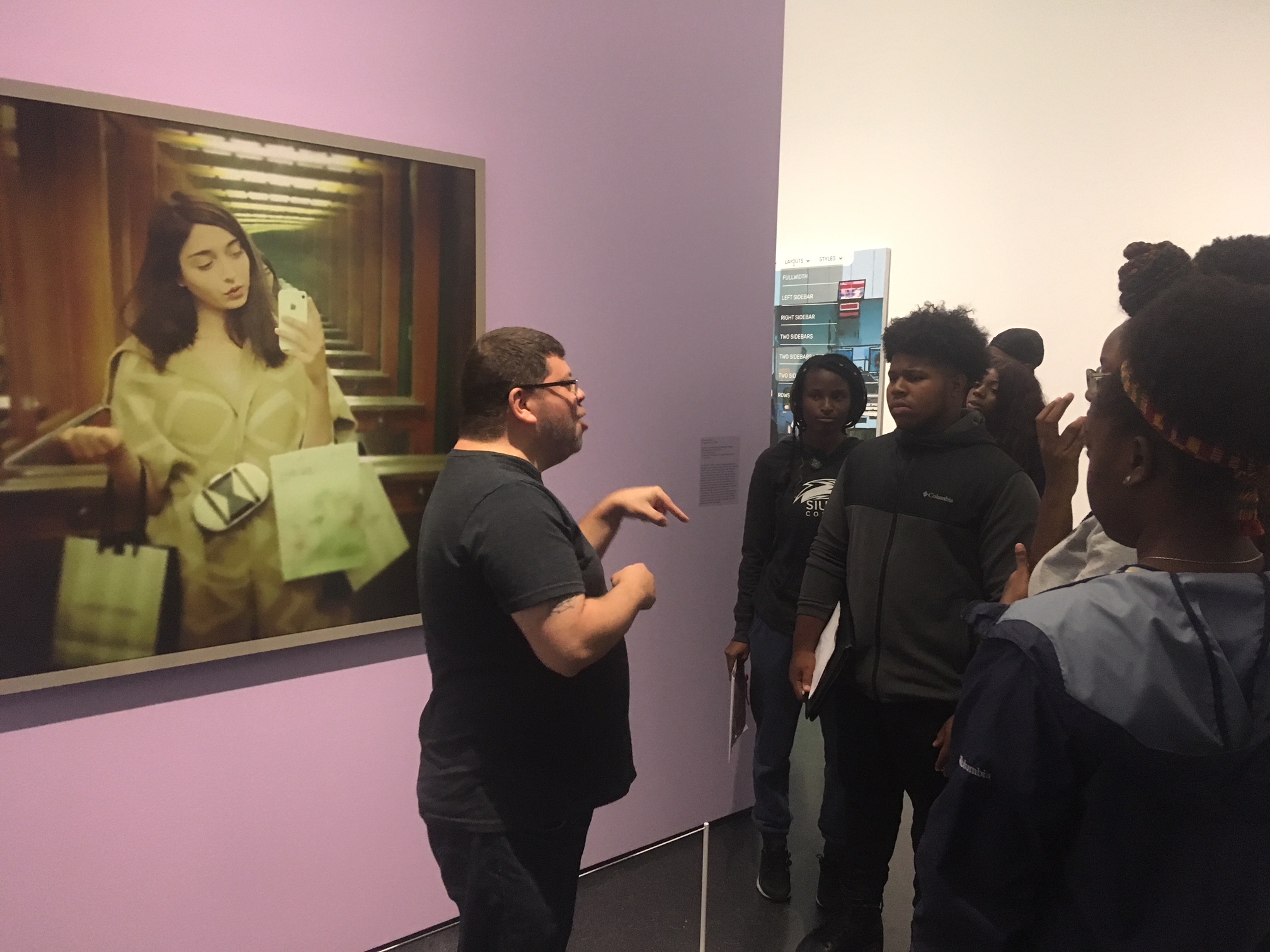
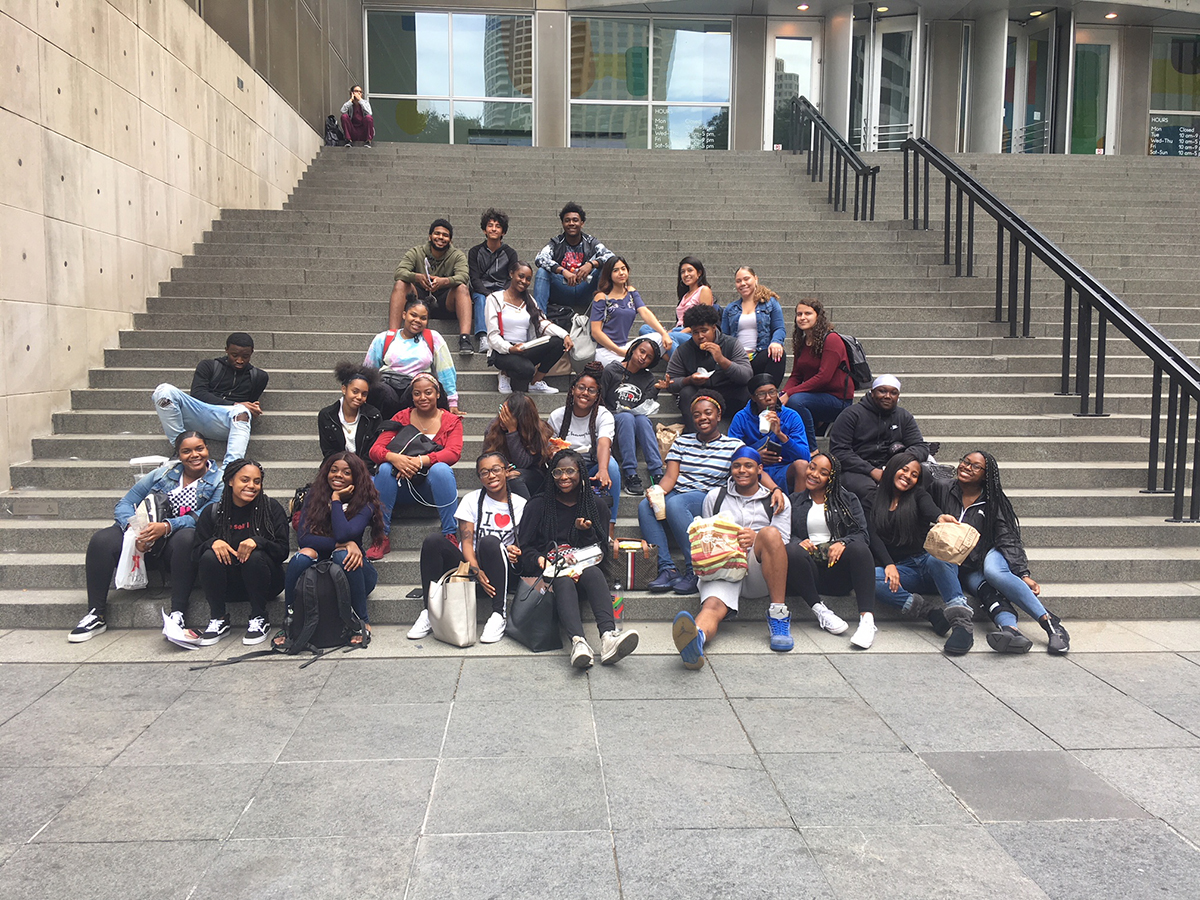
References + Resources
- David Foster Wallace, This Is Water: Full transcript and audio
- Cecil McDonald
- The Importance of Empathy
Jack Famera + Jake Mitchell
Gwendolyn Brooks College Prep
About Jack Famera + Jake Mitchell
With 19 years of teaching experience between the both of them, Jake and Jack have spent the past 5 years working and collaborating together at Gwendolyn Brooks College Prep located on the Southside of Chicago in the Roseland/Pullman neighborhood. Both graduates from the University of Illinois at Chicago with BFAs in film and electronic media as well having advanced Masters Degrees in Teaching and Administration, together they provide a vast pedagogy and expertise in a variety of mediums and art making techniques and hope to bring their collaborative spirit of art making to the teacher institute and expose their students to new ways of thinking and creating reflective, personal and dynamic art. The two also continue to travel internationally with students every year with the school’s Educational International Trips.
Jack and Jake Reflect on the Project
The moment the project began to take shape was when the students participated in the initial free word association activity while reading each other their assigned stories from The Struggle to be Strong. After viewing a teacher demonstration of writing down various words and phrases and scribbling little images while the story was being told, the students understood first-hand that there were no wrong answers or a right or wrong way to go about creating their project. This helped them embrace their interpretation of their selected stories as the source material for their artistic response.
One particular obstacle throughout the project was the pacing/planning of the project, since this project was being both created and implemented at the same time. Not having the answers to particular questions from the students was also challenging, since the answers were still being developed through our open-ended collaboration on the project. The answers, “We’ll see,” or “We just don’t know yet,” were not the phrases students wanted to hear. Experiencing this type of learning process with many unknowns has now better prepared us for taking on similar open-ended projects in the future, and we feel more confident in reinforcing the central issues and themes.
The students’ understanding of what empathy is, and how to show it, changed over time. We think this may be connected more with the class discussions, stories, and writing than the completed art objects. Throughout the project, the students were constantly being reminded that they have agency towards the creation, look, and sound. Having this freedom was difficult and foreign for many students who strive for structure, but us providing the materials and resources and teacher-made exemplars, while still keeping the requirements slim, helped students more confidently express themselves. We all kept engaged and on track toward completion by setting a few goals for each day, critiquing in-progress student examples, and reinforcing our connection to contemporary art through discussions on other artists and artworks.
The project was a dive into uncharted waters for us as teachers regarding preparation, planning, and execution. With most of our projects, we set off with a very pre-planned structure—something that is honed and crafted prior. With this project we allowed the time to be flexible, the preparation to be guided by the progress, and the outcomes to be more of an experiment in artmaking than creating a clear product that fits established requirements. It was at times very hard to allow the project to take shape in the moment. In the end, while the projects themselves may not have always been successful in evoking empathy, the students’ newfound grasp of the theme, how to show and talk about empathy, and how to be more empathic in their daily lives was the pleasant surprise which turned out to be the most important outcome.
